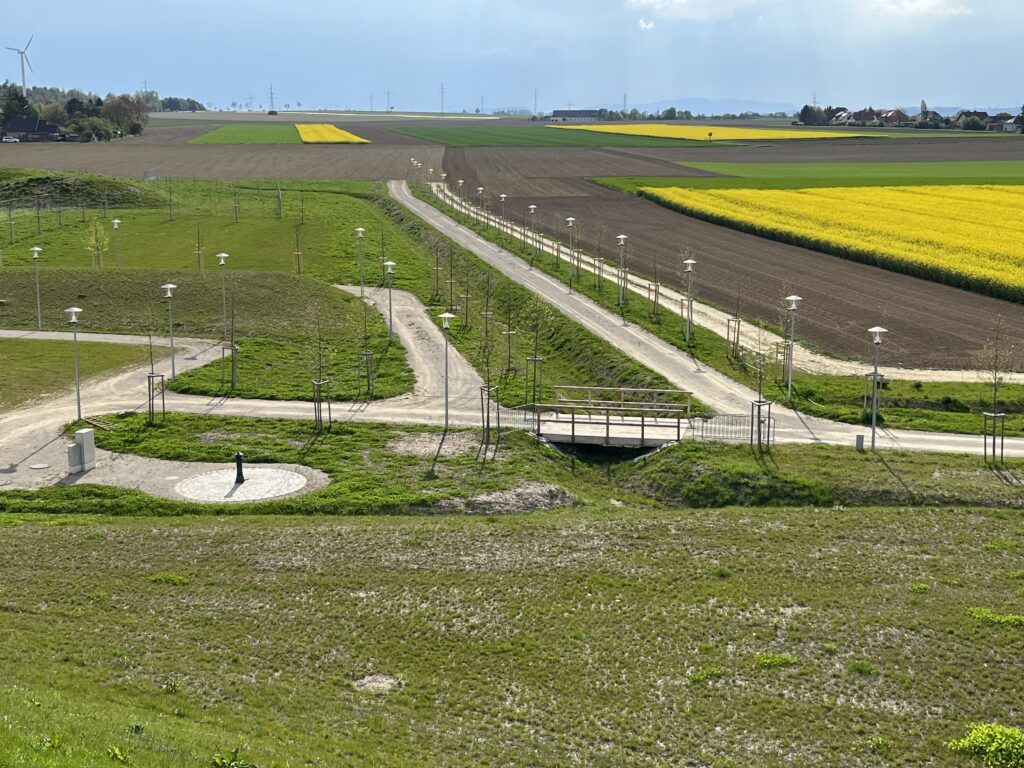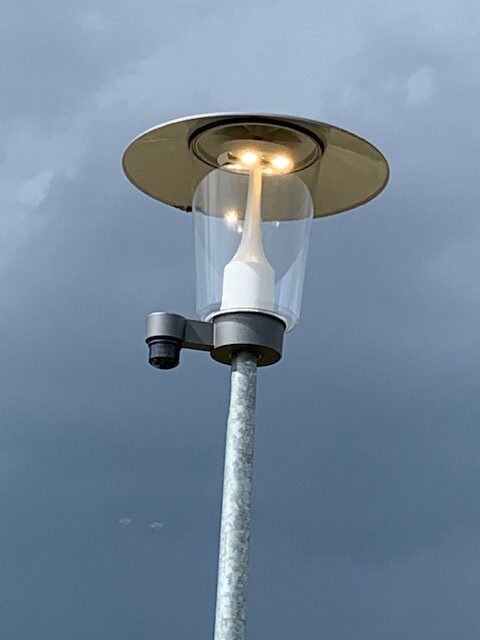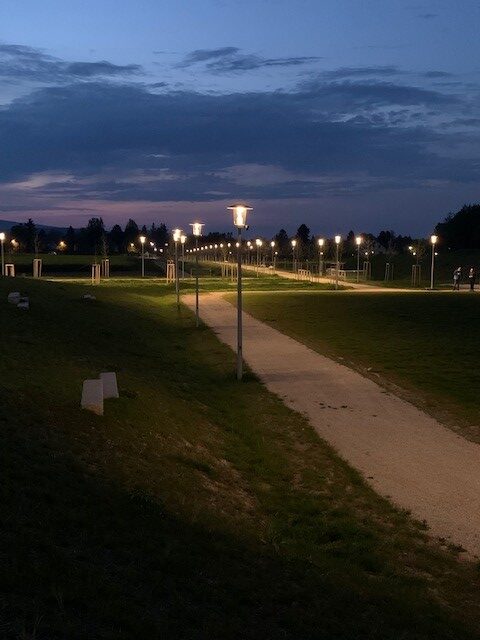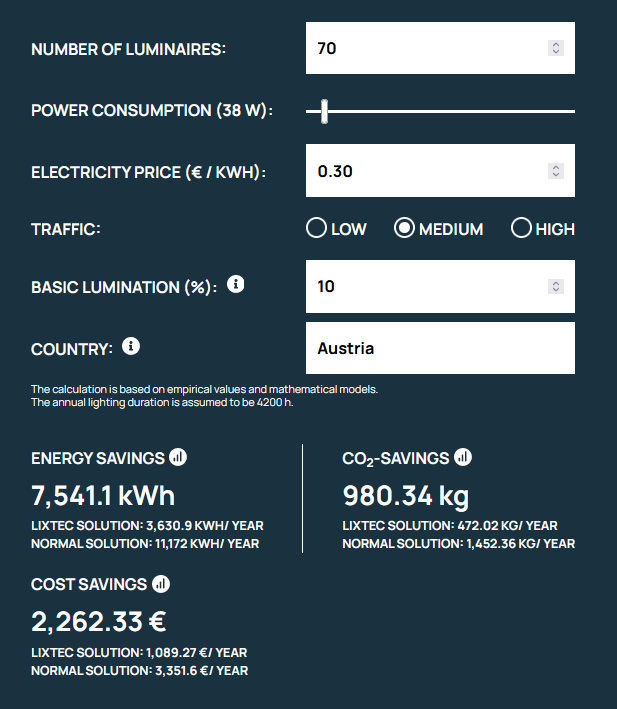Initial Situation
Due to the constant need for new living space in Austria’s conurbations, newly created urban districts such as the Seestadt in Vienna or the Smart City in Graz are emerging in a very short time. An “urban expansion area” is also being created in the city of this case study. (s. https://www.st-poelten.at/news/16002-naherholungsgebiet-fuer-gross-und-klein) In order to make the area sustainably usable, various measures up to and including the creation of a hill as a wind stopper, are being implemented.
The creation of a “micro-landscape” as an urban recreation area with different uses is also part of the design.
Normally, the number of visitors to parks is low during the night. After dark, the paths in this recreational area are probably only used sporadically by runners and cyclists. Due to the surrounding green space and the flora and fauna living there, the planning of the lighting is essential.
Solution Approach
In addition to the aspect of energy and cost efficiency in a residential area, the factors of subjective feeling of safety and comfort are at least as important, the project client decides in favour of demand-oriented lighting management. With this solution, it is possible to provide both sufficient lighting and the necessary efficiency. Thanks to the interconnected luminaires, the light moves dynamically with the object – pedestrian, runner or cyclist. Likewise, situational lighting is intended to reduce light pollution in the neighbouring environment.

Technical Implementation


There are 70 light points distributed over the entire park, which were set at relatively close intervals. A decorative model from “siteco” was chosen as the luminaires (see figure 2). In this chosen model of a pillar luminaire, the ZHAGA interface is attached externally to the luminaire in order to be able to grant the usual range of the detection area. The ZHAGA interfaces of the luminaires are aligned so that the sensors detect movement on the footpath and cycle path without any problems.
Due to the close spacing between the luminaires, it is not necessary to equip each light point with its own radar sensor in this project. In total, 37 of the 70 luminaires are equipped with lix.one SLC and the remaining 33 with SLC Hub 103 from “esave”. The lix.one SLC interconnect with the SLC Hubs 103 in a mesh network, which enables the modules to communicate with each other. Each luminaire with a radar motion detector is always assigned its two neighbouring luminaires with radio control module as neighbours. This means that when motion is detected, the two neighbouring luminaires are also always dimmed up. In this way, the light dynamically monitors the detected objects.
Configuration
Interconnection of Light Points:
The luminaires are configured via the esave sIConfigurator. Parameters such as the basic lighting, the lighting level in the event of motion detection and the holding time of the lighting can be set via this. As already mentioned, an SLC hub 103 GPS from “esave”
was also integrated into the system. These radio nodes are equipped with a time stamp, which enables the configuration of timecontrolled dimming profiles. For example, it would be possible to configure fixed lighting until 8 pm and motion-dependent dimming
profiles only afterwards.
In this case, the dimming profile is configured as follows:
50 % of light output for motion detection
10 % of the light output in idle mode
Hold time after motion detection: 15 seconds
When there is a close distance between light points, it is not necessary to equip each luminaire with a radar sensor.
Lixtec relies on a close partnership with “esave.” Controllers and motion sensors connect to form a mesh network in which sensors act as “masters” and can control several radio nodes as “slaves”.
Energy Calculator
In the current case, 70 luminaires with a power output of 38 watts and a medium traffic volume are assumed with an electricity price of 30 cents per kilowatt hour.
The low basic lighting of 10 % of the lighting power can save up to € 2,200.00 and almost a tonne of CO² annually. The payback period of the additional expenditure due to the installations for demandresponsive
lighting should be around 7 years.
As mentioned at the beginning, reduced light pollution due to the location in a green area also plays an essential role.

Conclusion
By using demand-responsive lighting, it is possible to reduce light pollution in the newly constructed park so that light is only present when it is needed. This should have a positive effect on the flora and fauna of the surrounding area. Despite or precisely because of this variant of lighting, no road user is left in the dark, which contributes to an increased sense of safety.
The advantages of situational lighting compared to conventional solutions are obvious from an economic point of view. In addition to the savings in running electricity costs, it can also be assumed that the service life of the LED lights will be extended.